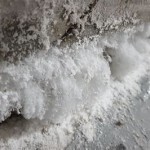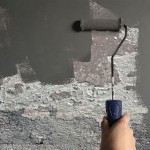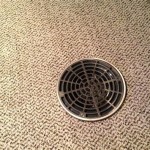How To Insulate Basement Wall
If you're looking to make your basement more comfortable and energy-efficient, insulating the walls is a great place to start. Here's a step-by-step guide on how to do it yourself:
Step 1: Gather your materials.
You will need the following materials:
- Insulation (such as fiberglass batts, rigid foam board, or spray foam)
- Vapor barrier (such as polyethylene sheeting)
- Furring strips (1x3 or 2x3 lumber)
- Construction adhesive
- Caulk gun and caulk
- Staple gun and staples
- Safety glasses
- Dust mask
Step 2: Prepare the basement walls.
Clear away any furniture or other objects from the basement walls. Turn off any electrical circuits that run along the walls. Wear safety glasses and a dust mask to protect yourself from dust and debris.
Step 3: Install the vapor barrier.
Roll out the vapor barrier over the basement walls, starting at the bottom. Overlap the seams by at least 6 inches and tape them together with duct tape. Use construction adhesive to seal the edges of the vapor barrier to the walls and floor.
Step 4: Install the furring strips.
Attach furring strips to the basement walls vertically, spaced 16 inches apart. Use construction adhesive to secure the furring strips to the walls. The furring strips will create an air space between the insulation and the vapor barrier, which will help to prevent moisture from condensing on the insulation.
Step 5: Install the insulation.
Cut the insulation to fit between the furring strips. Stagger the joints of the insulation to prevent air leaks. Use a staple gun to attach the insulation to the furring strips. Be sure to wear gloves when handling fiberglass insulation.
Step 6: Seal the gaps.
Caulk the gaps around the edges of the insulation and between the furring strips. This will help to prevent air leaks and improve the overall efficiency of the insulation.
Step 7: Finish the walls.
Once the insulation is installed, you can finish the walls with drywall, paneling, or another type of wall covering. Be sure to leave a small gap between the bottom of the wall covering and the floor to allow for air circulation.
Insulating your basement walls is a relatively simple and inexpensive way to make your home more comfortable and energy-efficient. By following these steps, you can do it yourself in a weekend or two.

Basement Blanket Insulation Building America Solution Center

Basement Blanket Insulation Building America Solution Center

How To Insulate Your Basement S Concrete Walls The Seattle Times

How To Finish A Basement Diy

Insulating Basements Canadian Home Inspection Services

How To Insulate Your Basement Like A Pro

Basement Insulation Contractor Custom Homes Townhomes Subdivisions

Inorganic Basement Wall Panels In Fargo Minneapolis Rochester By Expert Contractors To Beautiful Insulated

How To Insulate And Seal Rim Joists

Basement Insulation Maryland Northern Va Call Today








